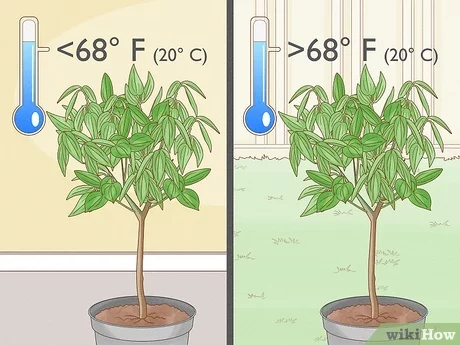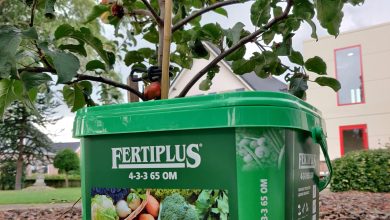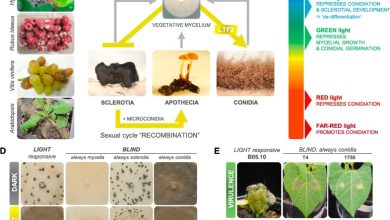How to Plant Cinnamon: [All Steps] + Complete Guide

Cinnamon is a tree that grows between 10 and 15 meters.
Since ancient times it has been used as a condiment for all kinds of dishes, as an ingredient for making teas and as a natural flavoring agent.
Important Points when Planting Cinnamon:
- When? In rainy season. The ideal is early Spring or early Autumn (if the winters are not too cold).

- Where? You need hot and humid climates. It needs temperatures between 24º and 30º centigrade.
- How do we prepare the land? Slightly clay soils. Fertile and deep soil. With good drainage and eliminating weeds.
- How do we water? With drip irrigation, to avoid waterlogging.
- How much do we water? Ideally twice a week, although in hotter seasons watering can be increased.
- How do we sow? Here step by step.
- When can we harvest? After sowing, after two or three years we can make our first harvest.
- What pests and diseases does it have? Trunk borers and Phytoptora.
Cinnamon Favorable Associations
You can plant it near garlic or pepper to ward off pests.
Where to sow?
 Cinnamon grows inhot and humid climatesnot less than 24° and not more than 30°.
Cinnamon grows inhot and humid climatesnot less than 24° and not more than 30°.
You can plant the cinnamon in a large pot where it grows and then transplant it into the ground. If your goal is not to expand too much, you can leave it in the pot and it will grow just over a meter.
If you want to plant the cinnamon directly in the ground, take care that there is aspace of 40 centimeters between the plantto one side of her.
When to sow?
Plant cinnamon in the rainy season so that it can take root and withstand the subsequent winter.
If you want to transplant it, wait again for the rainy season.
How do we prepare the land?
 The Cinnamon tree grows in wetlands so you can plant it inslightly clay soils. It has to be a fertile and deep soil.
The Cinnamon tree grows in wetlands so you can plant it inslightly clay soils. It has to be a fertile and deep soil.
Make sure the soil is free of weeds and has good drainage. If this is not the case, you can add a substrate such as coconut fiber to prevent future waterlogging.
An important fact is that if you want the tree to grow a lot you have to leave more than 40 centimeters between the next plant.
A minimum of one meter is recommended. This is so that the tree does not absorb all the nutrients and kill the other plants.
How do we water?
water regularly,once or twice a week is enough.If you see that the soil is still wet, do not water so that the roots do not rot.
We recommend, as almost always, drip irrigation.
Plant Cinnamon Step by Step
sowing by seed
 Place about three seeds separated from each other at a distance of one centimeter or the width of your finger. Also make sure that the depth at which you bury them is twice their diameter.
Place about three seeds separated from each other at a distance of one centimeter or the width of your finger. Also make sure that the depth at which you bury them is twice their diameter.
Cover with earth without crushing it. Make sure you have laid down compost and substrate before burying the seeds. Water daily without letting the stream of water fall directly on the seeds.
Place the pot near a sunny spot or in the greenhouse.
At first don’t let the rays hit him directly. Once it has germinated or the transplant has been carried out, make sure it is in a warm and humid place.
For the tree to develop properly it is necessary thatat least six hours a day in the sun.This is necessary for the photosynthesis process to take place and the plant does not die.
The transplant is carried out approximately four or five months after sowing.
Planting by cutting
If you havea stick of cinnamonYou must take care that it has not been processed and packed (ready for consumption) because they do not germinate.
Make sure that it has been cut from a healthy tree or that it is specified that its use is for planting.
The first thing you have to do is moisten the cutting and bury it in the seedbed or pot. You must ensure that the land has enough organic matter and substrate for it to take root.
Many times it happens that the cutting germinates, but has not taken root. In these cases, the transplant cannot be done because it would not resist the change, so you have to continue watering and add some ecological rooting agent (such as earthworm humus).
If, on the other hand, it already has roots, you can transplant and follow the same care as if you had planted seeds.
When and how is it harvested?
 the cinnamon treeis ready to harvest after two or three yearsfor the first and every two years thereafter.
the cinnamon treeis ready to harvest after two or three yearsfor the first and every two years thereafter.
What you have to do is remove the bark, which should come off easily after the rainy season when the stem is wet.
If you planted the tree on the ground it will probably be three meters tall.
Other indicators to harvest is to notice that the bark is brown since this means that it is ripe. Likewise, the stem should measure between 3 and 5 centimeters in diameter.
You can cut some branches with a handsaw, preferably those closest to the ground, put them to soak and then remove the bark with the help of a knife.
You have to expose the freshly harvested bark to the sun for a day, so that it begins to dry and roll up, until it has the shape of a tube.
This process takes about a week, but don’t worry if it takes a little longer.
What pests and diseases does it have?
An insect that usually attacks Cinnamon isthe trunk and branch borer.
It is the larva of the weevil and it pierces the branches causing its death. The best thing in these cases is to prune the tree and seal the infected areas with fungicide and insecticide.
There are some types of pests such as Phytoptora that attack the branches of young trees when they have poor drainage.
That is why it is important that from the beginning you add substrate and the soil is not too clayey.
Borers are controlled with tobacco extract , garlic extract, neem extract, or cow urine. Also remember to prune the tree every two years and remove the yellowish or purple leaves.
Where to buy seeds or seedlings of the cinnamon tree?
We always recommend going to a local nursery, plant or garden store. However, if you cannot access or do not have any at your disposal, then we leave you several options below:
Portal Cool Cinnamon Seeds Indoor Plants Evergreen Tree Seeds Traditional Herb 20 Pcs T
- Cinnamon Seeds Indoor Seedss Evergreen Tree Seeds Herb Traditional 20 Pcs T
- Price includes Customs duties
- Seeds is the set package
- Shipping providing Internationally
€4.99 View on Amazon Prices with VAT without transport
Last updated on 08-01-2022 / Affiliate Links / Affiliate API Images
 SAFLAX – Cinnamon basil – 200 seeds – Ocimum basilicum
SAFLAX – Cinnamon basil – 200 seeds – Ocimum basilicum
- Ideal seasoning for green tea and Christmas pastries
- 200 seeds per package. Quality seeds from Germany.
- With detailed instructions for successful propagation.
- Cinnamon basil is native to Mexico.
€3.95 View on Amazon Prices with VAT without transport
Last updated on 08-01-2022 / Affiliate Links / Affiliate API Images
ASTONISH SEEDS: 5 pcs Japanese cinnamon tree seeds container garden bonsai houseplant seeds
- We are selling seeds only
- Item Package Quantity: 1
- 5 Pc Japanese Cinnamon Tree Seeds Container Home Garden Bonsai Plant Seeds
- Image given for reference only
View on Amazon Prices with VAT without transport
Last updated on 08-01-2022 / Affiliate Links / Affiliate API Images
Benefits of this plant
Cinnamon has antispasmodic and anti-inflammatory properties so you can use it in teas to reduce stomach aches and excess gas.
It also has antioxidant and immunomodulatory properties.
It also contains many vitamins, mainly calcium and potassium.
How long does a cinnamon live?
Cinnamon can live an average of 100 years.
How long does it take to grow a cinnamon?
The tree takes about 5 years to grow.
Can it be grown in a pot?
Cinnamon accepts planting in pots of an appropriate size to take care of its roots.
Under this modality the plant will grow up to a maximum of 1 meter, approximately.
How many times does a cinnamon bear fruit?
Cinnamon produces fruit twice a year and then performs bi-annual cycles.
Should a cinnamon be pollinated to obtain fruit?
It is not necessary to pollinate because it is a species capable of carrying out this process by its own means.
How cold can a cinnamon tolerate?
Cinnamon is not resistant to cold, so it must be kept at a temperature that does not fall below 15 ° C.
The optimum is that it is above 24 ° C.
How many cinnamon can be planted per hectare?
Due to the texture of the tree, up to 1,300 units of cinnamon can be planted in one hectare.
This amount allows to obtain about 650 kilos of final product each year.
What kind of fertilizer does a cinnamon need?
It is not a demanding species in terms of fertilization and with an application of organic matter per year, such as manure, it will be more than enough.
How much heat and/or drought can a Cinnamon tolerate?
Although it is a species that prefers warm climates, it is best to keep it up to a maximum of 30° C.
It is not resistant to drought, so in cases of extreme heat, regular watering is necessary.

![Photo of How to Plant Tigernut: Planting Method in a [Complete Guide]](https://www.complete-gardening.com/wp-content/uploads/2021/06/plantar-chufa-390x220.jpg)


